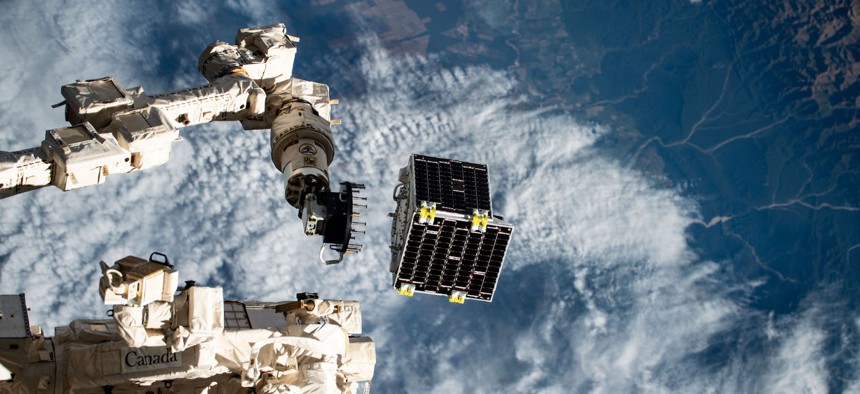
One of the Millennium Space Systems's prototype self-propelling satellites Millennium Space Systems, A Boeing Company
Military-Funded Program Produces A Self-Propelling Mesh Network In Space
Satellites that take advantage of the unique atmospheric conditions of low-earth orbit.
A new type of satellite—capable of moving itself in low-Earth orbit by adjusting the direction of its solar panels and then riding the (very) low amount of atmosphere at that altitude—is showing how the military may be able to achieve some of its ambitions in space despite physics limitations that have proved difficult to overcome.
Under a DARPA-funded program called RED EYE, launched in 2015, Millennium Space Systems built a series of three satellites that could be launched from the International Space Station, or ISS. The launch and subsequent demonstration took place in 2019, but it one of the satellites decommissioned in June. The company announced the successful demonstration this week, and said the satellites also showed the ability to communicate with one another via radio, as well as the capability for advanced processing.
“Our team developed a method to control the spacing of our constellation using just aerodynamic drag on our solar array. So with no propulsion at all, and just by modulating our drag profile. Because these are in low-Earth orbit, there is some amount of aerodynamic drag,” Doug Hulse, RED-EYE program manager at Millennium Space Systems, explained to reporters Wednesday. He emphasized that because Millennium was the prime contractor and had authority over not only design but also piloting and operating the satellites from the ground, that was essential for the demonstrator to work.
The lack of a propulsion system allowed the team to launch the satellites from the ISS (since space station safety protocols don’t look kindly on bringing highly flammable, pressurized fuel aboard.) But, Hulse said, it also frees up space on the satellites themselves for additional processing and computation. They could play a big role in turning sensed data into usable intelligence—real cues about adversary activity and intentions—through computer-heavy applications like artificial intelligence, and do it closer to where operators actually are, as opposed to on the other side of the globe.
“I think one of the big technologies that the Red Eye program demonstrated for us was advanced real time onboard processing,” he said. “I think AI applications are absolutely on the table for this kind of a processor in this approach to extended processing.”




